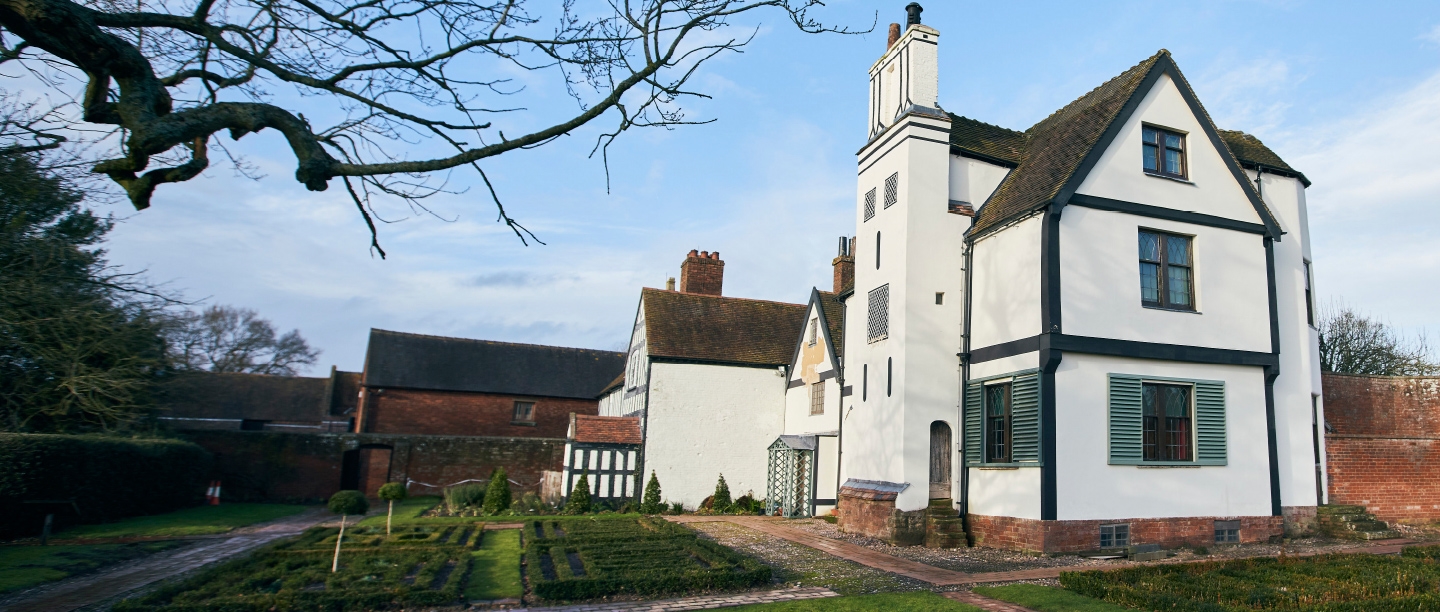Video: Homes Through History – Boscobel House
Watch our video to step back in time and meet the woodward of Boscobel House, William Penderell. Find out about life on this thriving Shropshire estate – in both the grounds and the house.
See him attending to estate matters as he answers questions from young English Heritage Members on what his day-to-day job as a woodward involves, and how he hid Charles II as he fled from Oliver Cromwell’s soldiers.
What is your typical day like? (Jasper)
As the woodward of Boscobel, I spend most of my day outside looking after the estate and maintaining the 200 acres of woodland. That could be clearing the undergrowth, maintaining the pastures or coppicing the trees with the other labourers to source wood to sell at market. And there’s always a fence to mend or vegetables to grow, not to mention emptying the outside privy, which we then use for manure for the garden!
Did you save Charles II from Oliver Cromwell’s army? (Jake)
Indeed I did! It was September 1651 and Charles (the son of Charles I) was on the run after the defeat of the Royalists at the Battle of Worcester. At just 21 years old, he was forced to flee for his life. My brother Richard met the king at Whiteladies Priory and attempted to guide him towards Wales but that area was heavily patrolled by Cromwell’s army – they couldn’t even cross the River Severn. Boscobel was known as a refuge of Catholics and Royalists, so instead he brought him here to our home.
What was it like when you first met the king? (Lila)
My wife Joan and I were suddenly awoken by loud knocking. We rushed downstairs to answer and there was my brother Richard and the king. He was soaked to the bone and shivering in my brother’s clothes. Richard had cut his hair short and oiled his face to disguise himself as a servant. He certainly didn’t look like royalty. We ushered him in and did our best to protect him, knowing that, if we were caught, our lives would be at stake too.
Where did you hide the king at Boscobel? (Harriet)
We first welcomed him into the parlour room, where we receive guests. Joan dried his boots and socks by the fire. Then daybreak came and we heard there were Parliamentarian soldiers searching the area, so we came up with the plan of hiding the king in one of our oak trees. Sure enough, the troops had arrived by midday. They searched the grounds and the woodland. Fortunately the king was hidden and the troops left. Charles then refused our offer of a bed and spent a whole night hiding in our priest hole (a space under the floorboards in our attic) as he was so scared of being caught.
Exploring Boscobel House
Built in about 1632, Boscobel House was originally a timber-framed farmhouse, but was later converted into a hunting lodge by John Giffard of Whiteladies. His family were Roman Catholics, at a time when Britain had broken free from the Catholic church and everybody was supposed to belong to the Protestant Church of England by law. Boscobel served as a secret place to shelter Catholics in times of need.
If you visit Boscobel, don’t forget to find the priest hole in which
Charles II hid, as well as the pasture where he also hid in an oak tree. The trees there now are ‘offspring’ of the original Royal Oak. The tallest oak you can see is the oldest descendant. You can also see gardens that date all the way back to the 17th century, which include an arbour on top of a mound, where Charles was said to have sat and read while he was here.
Make your own mini model of Boscobel House
Now you can make your very own model of Boscobel House. Ask an adult to download the template and print it out for you, then follow the instructions below to finish this grand country home.
Once you’ve completed it, put your model on display and imagine yourself looking after the estate like woodward William Penderell!
Download your templatesHow to make your model of Boscobel House
You will need:
- Your exclusive templates
- Scissors
- Glue stick or double-sided sticky tape
-
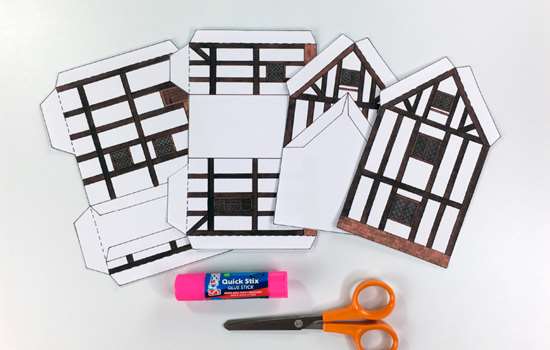
Step 1
Carefully cut out A, B, C and D using a pair of scissors.
-
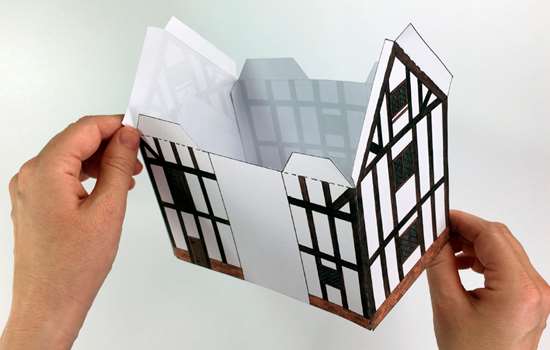
Step 2
Glue A, B, C and D together to form the walls of the house.
-
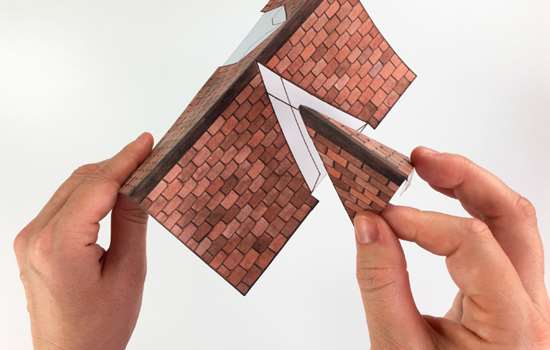
Step 3
Carefully cut out E (the main roof) and G (the roof attachment). While the roof is flat, fold along the dotted lines on G, and glue it to the roof.
-
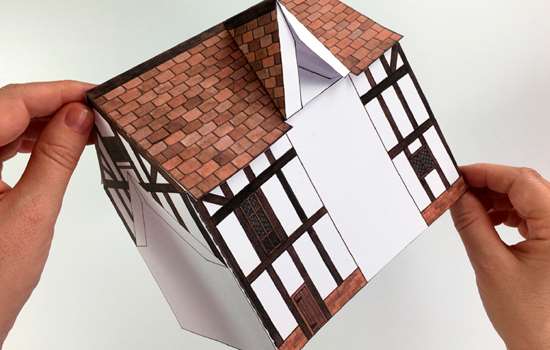
Step 4
Stick the roof to the walls that you made in step 2, with the roof attachment pointing towards the front to match up with the white triangle.
-
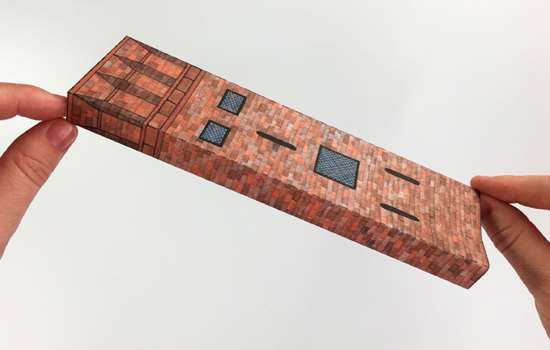
Step 5
Carefully cut out F, the main chimney, and fold along the dotted lines and glue together. The top of the chimney folds in like the lid of a box.
-
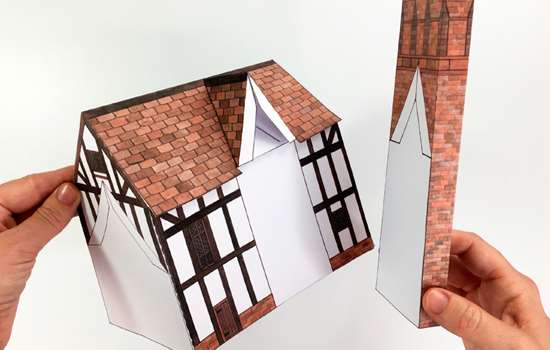
Step 6
Glue the chimney to the gap in the front wall, lining up the triangle shape on the back of the chimney with the tabs on the roof attachment.
-
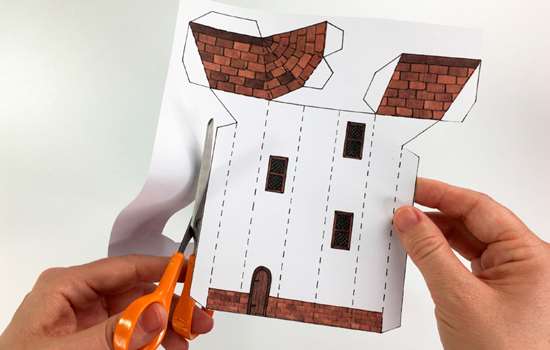
Step 7
Carefully cut out H (the oratory) and fold along the dotted lines.
-
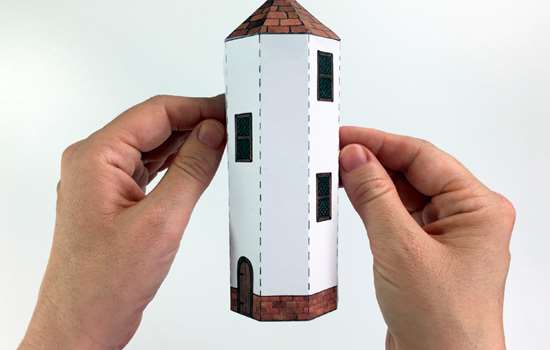
Step 8
Bring the two sides of the roof of the oratory together, and glue to secure.
-
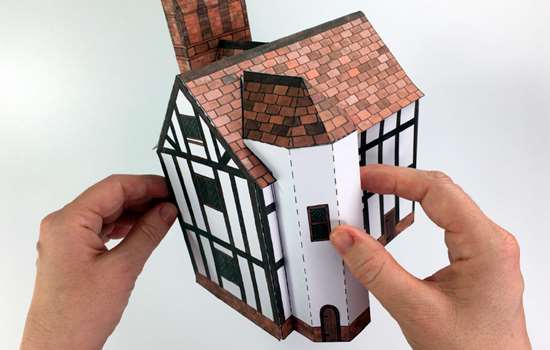
Step 9
Slide the oratory on to the back of the building, as indicated by the gap in the roof. Line up the shape on the roof with the oratory. Stick the roof of the oratory down first, then the sides.
-
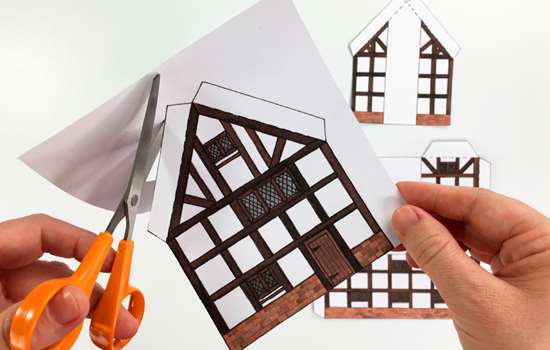
Step 10
Next, carefully cut out I, J, K and L using a pair of scissors.
-
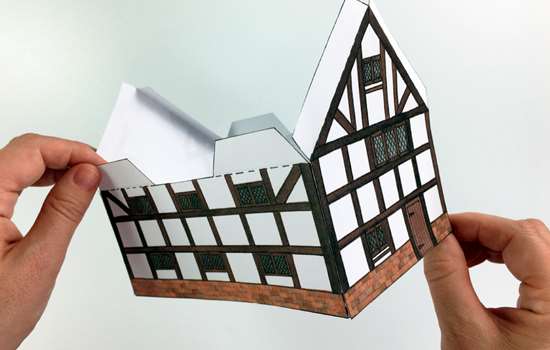
Step 11
Glue I, J, K and L together to form the walls of the other house.
-
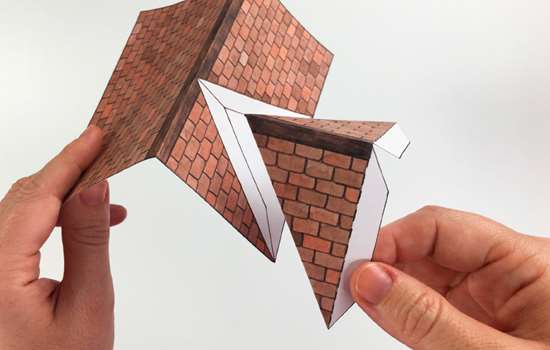
Step 12
Carefully cut out N (the other roof) and O (the roof attachment). While the roof is flat, fold along the dotted lines on O, and glue it to the roof.
-
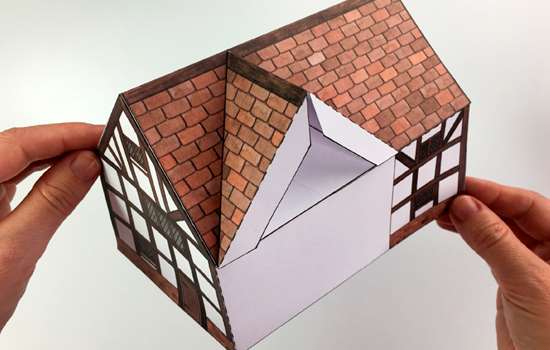
Step 13
Stick the roof to the walls that you made in Step 11, with the roof attachment pointing inwards.
-
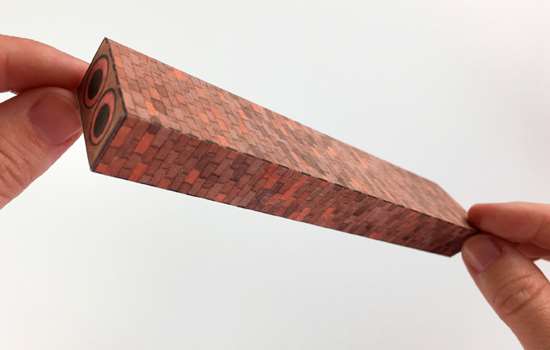
Step 14
Carefully cut out M, and fold along the dotted lines. Glue together to form the rear chimney.
-
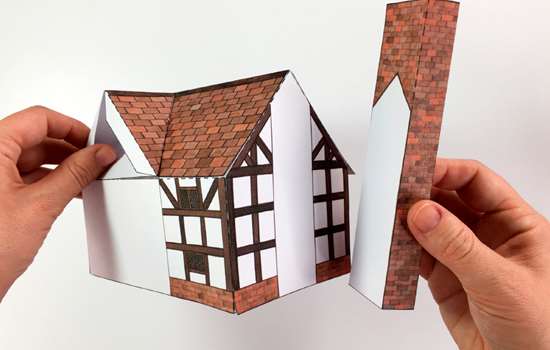
Step 15
Glue the chimney to the gap in J, at the back of the house.
-
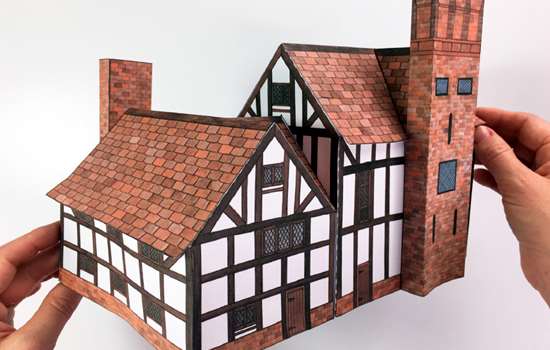
Step 16
Finally, join the two houses together to complete your model. Line up the small roof attachment with the shape on the side of D (the main house) and stick down so that both parts of Boscobel are flush against each other.
More To Explore
-
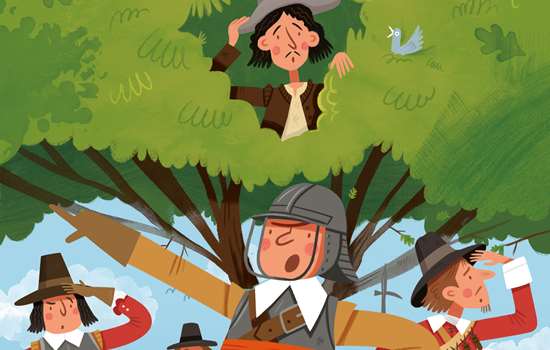
The Stuarts and the English Civil Wars
-
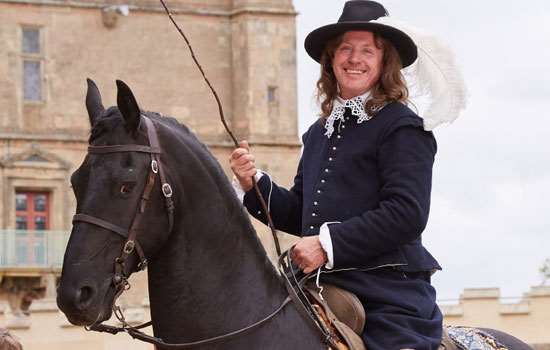
Meet a Stuart master Horseman
-

Make a Stuart Hat
-
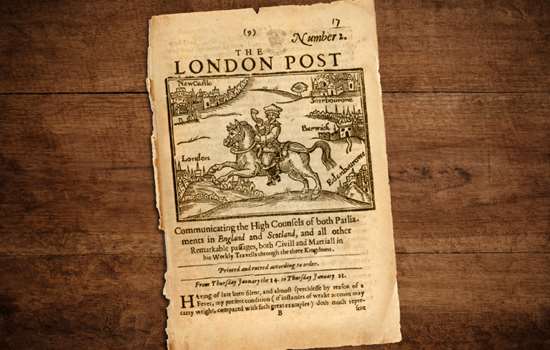
Design a Stuart newspaper

